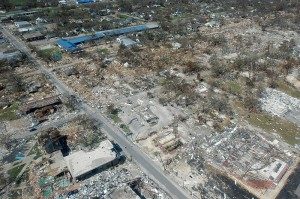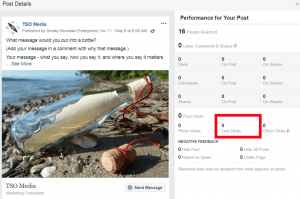For millennials, living in the moment isn’t possible without an Instagram post. Smartphones have revolutionized how people share what happens in the now, and word-of-mouth isn’t powered by the mouth anymore.
The fact is, things can’t happen in real-time without starting a conversation online first. According to Pew Research Center, 7 percent of the U.S. population is “Smartphone-Dependent” for Internet access. That number grows to 15 percent for Americans aged 18 to 29.
This means that responsive design is an important investment, especially as it grows. Users are looking for shareable content for events they’re excited about, so craft your user-experience around how users prefer to engage. Airbnb and Uber turned this opportunity into profitable businesses that have gone social, global, and know the power a great user-experience.
With new tools to take advantage of, experiential brands have started to incorporate new digital strategies to promote engagement and impressions. It’s time to optimize them.
Using Hashtags In Live Events
Promoting events around a hashtag is crucial for tracking, but community managers know that there’s more to it than that. When an event promotes hashtags the right way, it can bring many different people together across different platforms for a single engagement metric.
Let’s use the Super Bowl for example. Half the ads that played during the Super Bowl had hashtags, but not many had them up for more than a second.
The actual Super Bowl event had 3 different hashtags going on. While the one promoted was #SB49 and led to being the most tweeted Super Bowl ever (not that it had much competition), #SuperBowl and #SuperBowlXLIX were fairly popular as #SB49 wasn’t visible to these engaged audiences until the game had already begun.
This means two things. First of all, each brand that had a spot during the sports event knows the importance of social media for an engaged audience. Second, after such a large investment, big events and brands still don’t know how to integrate social media into their other marketing strategies, like TV.
One mistake next year’s Super Bowl ads will certainly rectify is to incorporate a strategy that reaches mass audiences through TV and gives them a face on social media. While there will always be a ballpark guess on viewership, there’s much more measurement involved when commercials inspire people to tweet.
When the game’s on, viewers can and will treat their phones like a second screen. Sports fans are excitable and engaged, and will convert an impression into action. Clearly, there’s opportunity there, and because nobody has discovered the sweet spot yet, it’s the best time for brands to get their heads in the game and be the first-mover to get it right.
This isn’t limited to football. All TV entertainment nowadays gets its own form of discussion. Reddit and Facebook go wild with every TV show premiere. Unexpected or unpopular moments in the show can quickly turn into a thread of engaged viewers commenting about how it’s just so unfair that their favorite Game of Thrones character is now gone forever and the show’s still going on.
This is what community management is all about. Social media experts are prepared. They know exactly when these moments will be, and will have a plan of action ready for the backlash of Internet engagement. With that information, they’ll be ready for more viewers to come back next week to see what happens next.
The Power Of Social Influence
When fans are away from the TV, cross-platform moments are captured with a different idea in mind: “I need to tell my friends about this.”
When attending events like Bonnaroo or Coachella, the best way to tell friends back home they’re missing out is to show them with pictures exactly what they aren’t seeing.
But it shows itself a little differently in the digital age. Using Facebook and Twitter to announce a road trip to this year’s festival is just the start. Showing off with photos and videos is how to execute it.
Instagram is especially popular for this low-key arm-flex. The photo-sharing app capitalizes on capturing a moment in real-time, putting value on photos that capture the best moment of the show. Photomaps are an especially useful way to show friends how far away from home an experience is.
As an app with 300 million monthly users, Instagram has proven it’s an opportunity to turn iPhone photographers into brand ambassadors. Capitalizing on the influence each user has, creating eye-catching displays in real life will translate to digital impressions.
Snapchat’s geofilters are a popular way to show off a whole experience. Snapchat will only let a user swipe towards a geofilter if they’re physically at the location, creating a “Wish you were here” symbol mixed with a feeling of “I’ve been talking about this for months and I’ve finally made it.”
The Value Of Real-Time Marketing
What do these things have in common? User-generated content. By simply optimizing location features for users to choose to use, brands get high promotional value for the low promotional cost. Each photo snapped or video recorded influences viewers to feel like they need to take the time to go to the event and stay engaged.
Community managers are valuable to experiential brands because they can monitor and direct the flow of this content generation and spotlight the best ones with a retweet, double tap, or share. They are the ones who say when, where, and how users engage with a brand. While real-time events can be unpredictable, the flow of their online engagement can be controlled with the right social media team.
There’s very little direction needed from brands to promote photos, videos, and check-ins. Focus on marketing the experience, and let the users develop easily measurable moments on their own. Their voice and creativity in the moment brings a lot of unplanned value and impressions to events, so it’s best to optimize real-time events to have the best digital experience for the ticket-buyer.
Digital & Social Articles on Business 2 Community(142)






